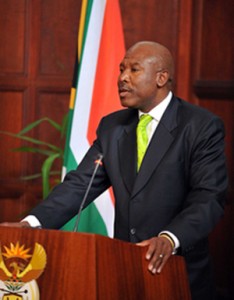SA Reserve Bank governor Lesetja Kganyago announced on Thursday that the repo rate has been increased by 25 basis points to 6.25%.
The prime lending rate is 9.75%.
The repo rate is the interest rate that the SARB charges banks while the prime lending rate is the interest that banks charge customers.
The SARB governor said that the new rate would be effective from November 20.
Speaking at the end of the Reserve Bank’s Monetary Policy Committee meeting, Kganyago said that the inflation forecast has remained relatively unchanged but the risks to the forecast had increased.
The central bank chief added that the MPC had to decide whether it needed to act now on the interest rate or at a later stage.
“The general approach of the MPC is to attempt to see through exogenous shocks and react to second-round effects. However, shocks of a persistent nature, for example extended periods of currency depreciation or drought, or multi-year increases in electricity prices make it more difficult to disentangle these first and second round effects,” Kganyago said.
“In the absence of demand pressures, the MPC had to decide whether to act now or later. On the one hand, given the relative stability in the underlying of core inflation, delaying the adjustment could give the MPC room to re-assess these unfolding developments at the next meeting, and avoid possible additional headwinds to the weak growth outlook. On the other hand, delaying the adjustment further could lead to second-round effects and require an even stronger monetary policy response in the future, with more severe consequences for short-term growth.
“Complicating the decision was the deteriorating economic growth outlook. Although the change to the growth forecast was marginal, the risks to the outlook, which were more or less balanced at the previous meeting, are now assessed to be on the downside.
“Against this difficult backdrop, the MPC decided to increase the repurchase rate by 25 basis points to 6,25 per cent per annum effective from 20 November 2015. Four members preferred an increase, while two members favoured an unchanged stance. Despite the increase, the MPC still views the monetary policy stance to be accommodative. The continuing challenge is for monetary policy to achieve a fine balance between achieving our core mandate of price stability and not undermining short-term growth unduly. Monetary policy actions will continue to focus on anchoring inflation within the target range while remaining sensitive, to the extent possible, to the fragile state of the economy. As before, any future moves will therefore be highly data dependent.”
